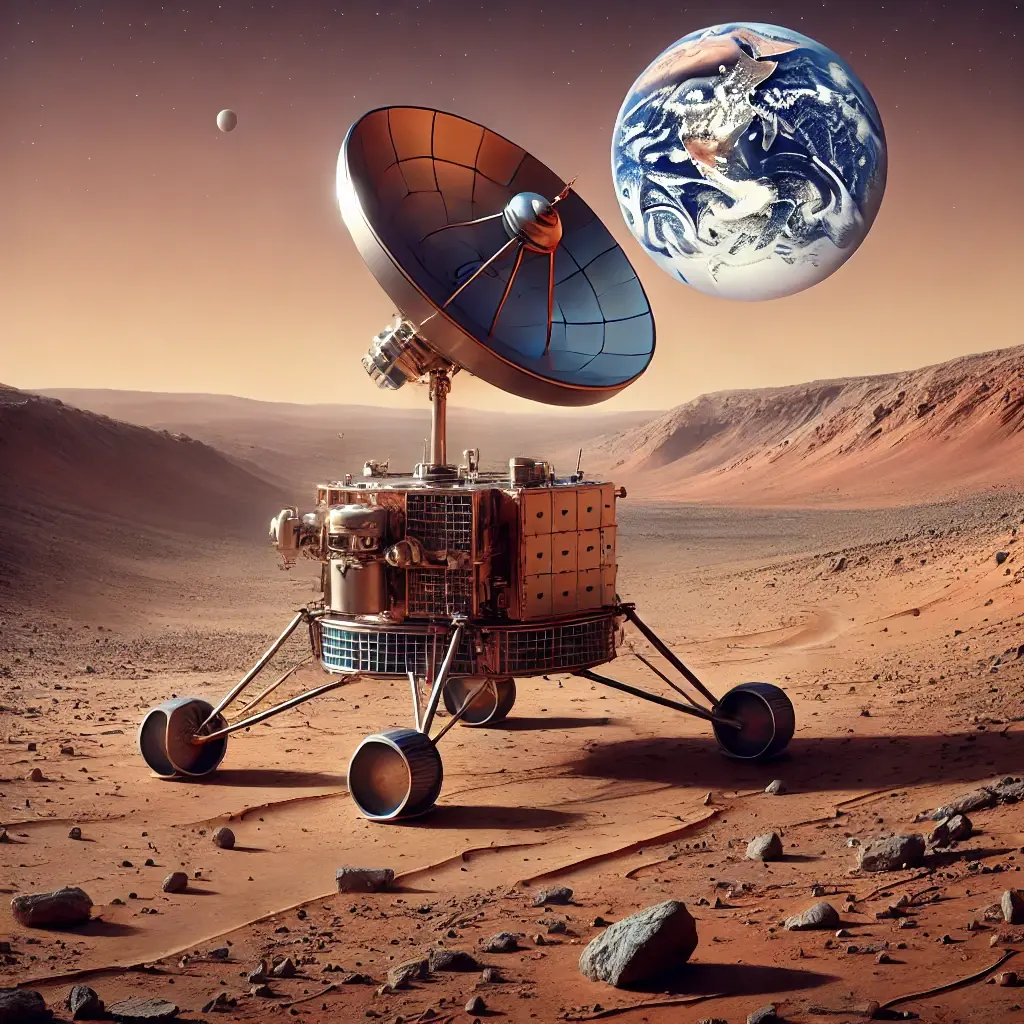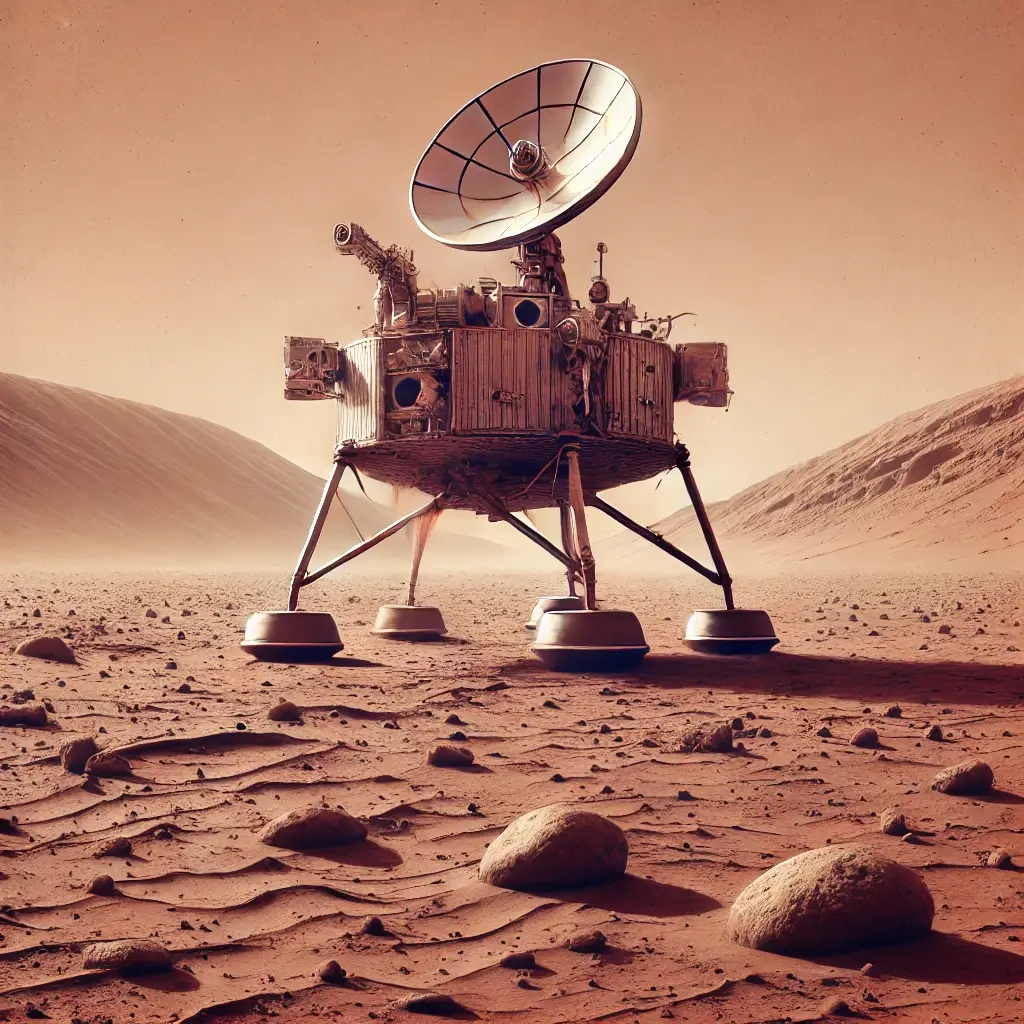Continuing the theme of space exploration, Viking 1 successfully landed on Mars on July 20, 1976. This mission, part of NASA’s Viking program, was the first U.S. mission to land a spacecraft safely on the surface of Mars and return images of the surface. The primary objectives of the Viking missions were to obtain high-resolution images of the Martian surface, characterize the structure and composition of the atmosphere and surface, and search for evidence of life. Viking 1’s successful landing provided a plethora of data, significantly advancing our knowledge of the Red Planet.
The Viking program consisted of two spacecraft, Viking 1 and Viking 2, each with an orbiter and a lander. The program was designed to perform extended scientific investigations on Mars, utilizing sophisticated instruments to study the planet’s geology, climate, and potential for harboring life. The Viking missions were a direct response to the increasing interest in Mars as a possible abode for life, spurred by earlier missions that suggested the presence of water and complex geology.

Launched on August 20, 1975, Viking 1’s journey to Mars took nearly a year. The spacecraft entered Martian orbit on June 19, 1976, allowing mission controllers to carefully select a landing site. The chosen site was Chryse Planitia, a smooth, low-lying plain in the northern hemisphere of Mars. This site was selected for its relatively safe terrain and scientific interest.
The descent and landing of Viking 1 were highly complex operations, involving the use of a heat shield, parachutes, and retrorockets to slow the spacecraft’s descent. The successful landing was a testament to NASA’s engineering prowess and marked a significant milestone in space exploration. Viking 1 touched down at 22.3°N latitude and 48.0°W longitude, sending back the first clear images of the Martian surface.
These initial images revealed a barren, rocky landscape with a reddish hue, confirming some of the earlier telescopic observations. The photographs captured the public’s imagination and provided scientists with a wealth of data to analyze. The lander transmitted images and data for more than six years, far exceeding its expected operational life.
One of the key instruments on the Viking lander was a suite of biology experiments designed to detect signs of life in Martian soil. These experiments included a gas chromatograph-mass spectrometer, a pyrolytic release experiment, a labeled release experiment, and a gas exchange experiment. The results of these experiments were ambiguous and controversial, with some scientists interpreting them as indicative of microbial life, while others argued for non-biological explanations.
In addition to the biology experiments, Viking 1 carried instruments to study the Martian atmosphere. The lander measured the composition, temperature, pressure, and wind speed of the atmosphere, providing critical data about the planet’s weather and climate. The findings indicated that Mars had a thin atmosphere composed primarily of carbon dioxide, with trace amounts of nitrogen and argon.

The Viking orbiters played a crucial role in the mission, mapping the Martian surface and relaying data from the landers back to Earth. The high-resolution images captured by the orbiters revealed details about the planet’s topography, including volcanoes, canyons, and evidence of ancient river channels. These findings suggested that liquid water had once flowed on Mars, raising questions about the planet’s potential for past life.
Viking 1’s discovery of a highly oxidizing soil composition was another significant finding. The soil analysis indicated the presence of iron oxides, which give Mars its characteristic red color. This oxidizing environment poses challenges for the preservation of organic molecules, complicating the search for past or present life.
The Viking missions also provided insights into Mars’ geologic history. The data suggested that Mars had undergone significant climatic and geologic changes over time, including periods of volcanic activity and possible glaciation. These findings have shaped our understanding of Mars as a dynamic planet with a complex history.
The success of Viking 1 and its twin, Viking 2, which landed on Mars in September 1976, marked the beginning of an era of detailed exploration of the Martian surface. The data collected by these missions laid the groundwork for subsequent missions to Mars, including the Mars Pathfinder, the Mars Exploration Rovers, and the Curiosity rover.
The legacy of the Viking missions continues to influence Mars exploration today. The techniques and technologies developed for Viking have been refined and improved in later missions, contributing to our ongoing quest to understand Mars and its potential for life. The lessons learned from Viking have been invaluable in planning and executing subsequent missions.
The Viking program’s contributions extend beyond Mars exploration. The mission’s success demonstrated the feasibility of landing and operating robotic spacecraft on other planets, paving the way for future exploration of the solar system. The knowledge gained from Viking has informed missions to other planetary bodies, including Venus, Saturn’s moon Titan, and Jupiter’s moon Europa.
Viking 1’s achievements were celebrated globally and inspired a new generation of scientists and engineers. The mission highlighted the importance of space exploration in advancing human knowledge and fostering international collaboration. Viking 1’s success was a source of national pride and a testament to the ingenuity and determination of the people involved in the mission.
The data and images returned by Viking 1 have been studied extensively over the decades, leading to numerous scientific publications and discoveries. The mission’s findings continue to be relevant as new missions build on its legacy and explore new frontiers on Mars. Viking 1 remains a symbol of human curiosity and the relentless pursuit of knowledge.

As we look to the future, the spirit of the Viking missions lives on in ongoing and planned Mars exploration efforts. Missions like the Perseverance rover and the upcoming Mars Sample Return aim to further our understanding of Mars and search for signs of past or present life. The pioneering work of Viking 1 has paved the way for these ambitious endeavors.
The Viking missions remind us of the importance of exploration and the endless possibilities that lie beyond our planet. As we continue to explore Mars and other worlds, we carry forward the legacy of Viking 1, driven by the same spirit of discovery and the desire to expand our horizons.
